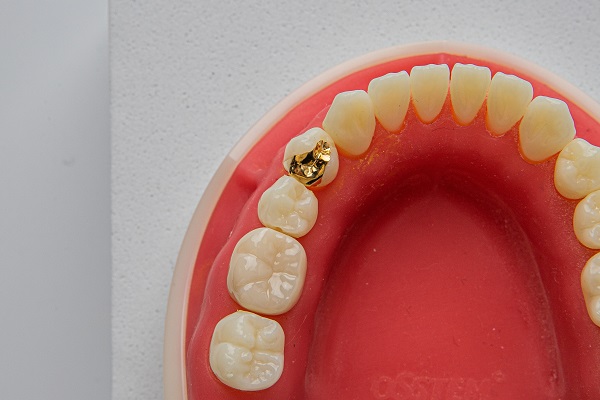A Step-by-Step Guide to Getting a Dental Inlay

A dental inlay is often necessary for teeth that are in bad shape, whether it be due to cavities or accidental injuries such as cracks or chips. However, among dental restorations, inlays are not the most common type. Most people are familiar with dental fillings or crowns, but general dentists also recommend dental inlays for additional types of problems. Because dental inlays are not as familiar to most people, it is a good idea to review how they work and what the process is like. Ready to learn more?
The dental inlay process
Outlined below is each step of the dental inlay process, as well as what they are and how they work.
What are dental inlays?
Dental inlays are indirect dental restorations that are placed in between the cusps of a tooth. They are custom created in a dental lab, which requires patients to visit their dentist's office multiple times throughout the process. Dental inlays are typically made of composite resin or porcelain, depending on the patient's desire and the dentist's recommendation. Both materials can be made to match the patient's original tooth color, which makes for a discreet and aesthetically-pleasing restoration.
A step-by-step guide to the procedure
When needing a dental restoration, it can be helpful to review each step to better understand how the process works. Keep reading to find out more about each step of a dental inlay procedure.
- During the first appointment, the dentist will numb the patient using a local anesthetic. Numbing allows for little to no discomfort to be felt.
- Using a dental drill, the dentist will clear out the tooth that has a cavity. If a crack or chip is present, the dentist will use a different tool to smooth out the tooth's surface, if there are any imperfections.
- The dentist will take an impression of the tooth that requires the dental inlay. Then, the impression will be sent off to the dental lab.
- The patient will have a temporary seal placed over their tooth to ensure that bacteria do not get in while waiting for the permanent inlay.
- Once the dental inlay is created, the patient will return to their dentist so that it can be cemented in place.
- Using dental cement, the inlay can be put in place, relatively quickly and seamlessly.
- A follow-up appointment may be required to ensure that the dental inlay is fitting properly and doing its job.
When dental inlays are needed
Dental inlays are typically recommended when a patient has a cavity that is too large for a dental filling. Additionally, they are recommended when the tooth doesn't have enough surface space for a dental crown to be used. Outside of cavities or tooth decay, dentists recommend inlays for patients that have minor cracks or chips in between the cusps of a tooth.
Reach out today!
Want to learn more about the dental inlay process? Talking with a general dentist about inlays and other restorations is a great next step. Reach out today to learn more or to get started with a dental inlay!
Request an appointment here: https://chambleedental.com or call Chamblee Dental Care at (770) 238-4316 for an appointment in our Chamblee office.
Check out what others are saying about our dental services on Yelp: General Dentistry Services in Chamblee, GA.
Recent Posts
General Dentistry visits are essential when looking to maintain good oral health. While at-home oral hygiene is an effective way to keep the gums and teeth in good shape, it alone is not enough. Seeing a general dentist at least twice a year for a check-up combined with at-home oral hygiene is the best way…
General dentistry focuses on managing oral health. Routine checkups with a general dentist can help patients avoid things like cavities or infections. Oftentimes, people think that they can get away with skipping these appointments when in actuality, they are very important.When considering whether or not to have a general dentistry checkup, the answer is always…
When it comes to general dentistry, it is recommended that you use mouthwash as part of your daily oral hygiene regimen because it kills the germs left in your mouth after brushing. Most adults use a mouthwash that contains alcohol because they believe it kills germs more effectively than alcohol-free mouthwash.In an effort to figure…
Our dental office knows that one of the most important visits you can ever make to our dentist office is the routine visits twice a year to ensure that your teeth stay in optimal health. We find that one of the most effective treatment options is preventive care. Thus, we provide dental care that helps…


